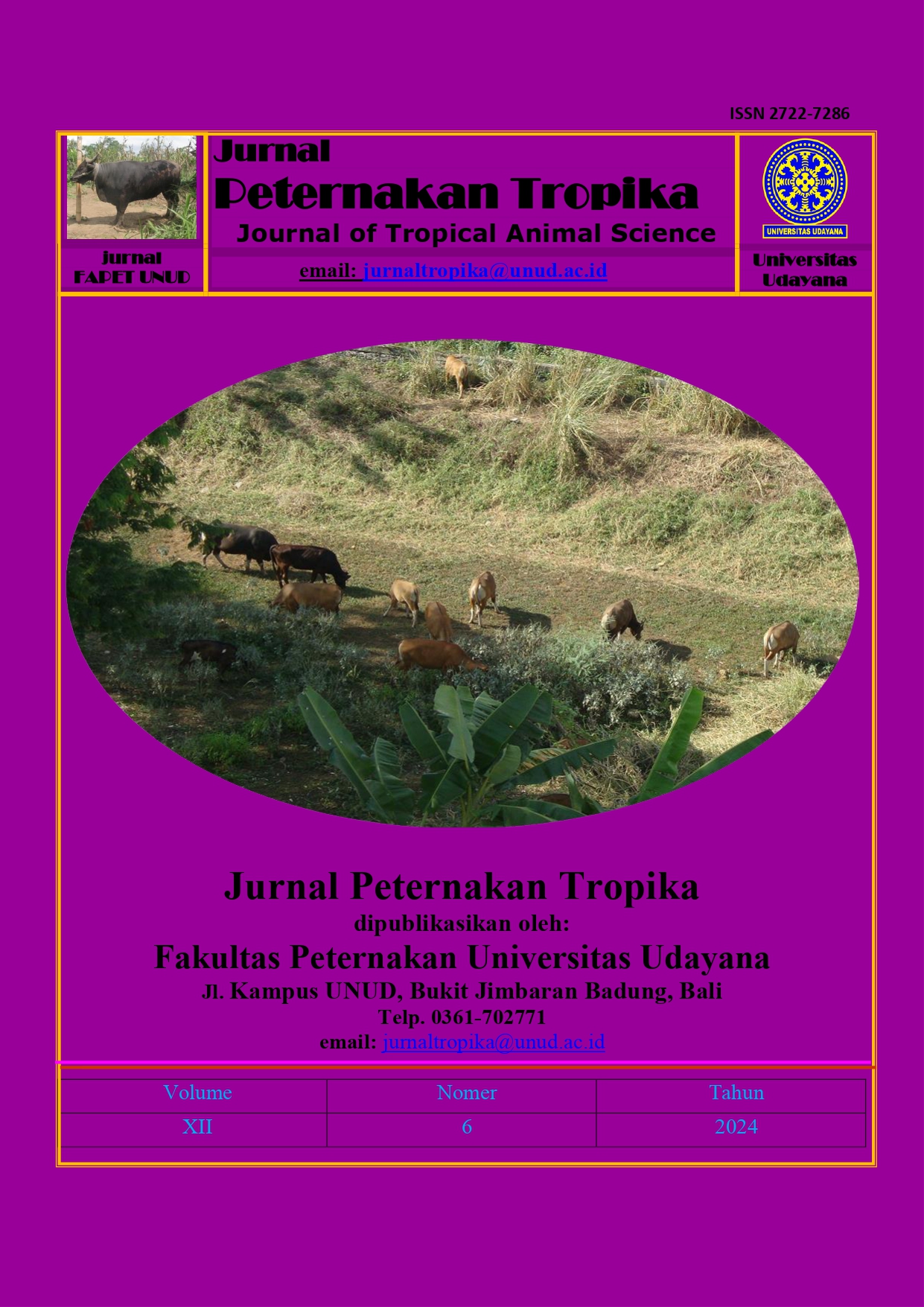THE EFFECT OF DIFFERENT DOSES PLANT GROWTH PROMOTING RHIZOBACTERIA (PGPR) OF BAMBOO ROOTS AND SOIL WATER CONTENT ON GROWTH AND YIELD OF Asystasia gangetica (L.) subsp. Micrantha
Abstract
This study aims to determine the interaction between the dose of plant growth promoting rhizobacteria (PGPR) bamboo roots and soil moisture content as well as the effect of each factor on the growth and yield of Asystasia gangetica(L.) subsp. Micrantha. The study was conducted in the Greenhouse of the Sesetan Research Station, Faculty of Animal Husbandry, Udayana University for 10 weeks, using a complete randomized design of two factors, the first factor was the dose of PGPR bamboo roots consist of D1 = 0ml pot-1, D2 = 10ml pot-1, D3 = 20ml pot-1 and the second factor was content consist of K1 = 25%, K2 = 50%, K3 = 100 % field capacity. There were 9 experimental units and each experimental unit was repeated 4 times, so there were 36 pots. The variables observed were: growth yield, and plant growth characteristics variables. The results showed that there was an interaction between the effect dose of bamboo root PGPR and soil water content differently on the variable ratio of total dry weight of forage to dry weight of roots. Dose of 20ml pot-1 PGPR of bamboo roots tends to show the highest results on the productivity of Asystasia gangetica. Giving 100% water content could increase the productivity of Asystasia gangetica. It was concluded that there was an interaction between the dose of PGPR bamboo roots and soil moisture content differently in the variable ratio of total dry weight of forage to dry weight of plant roots of Asystasia gangetica, but there was no interaction with other variables.






